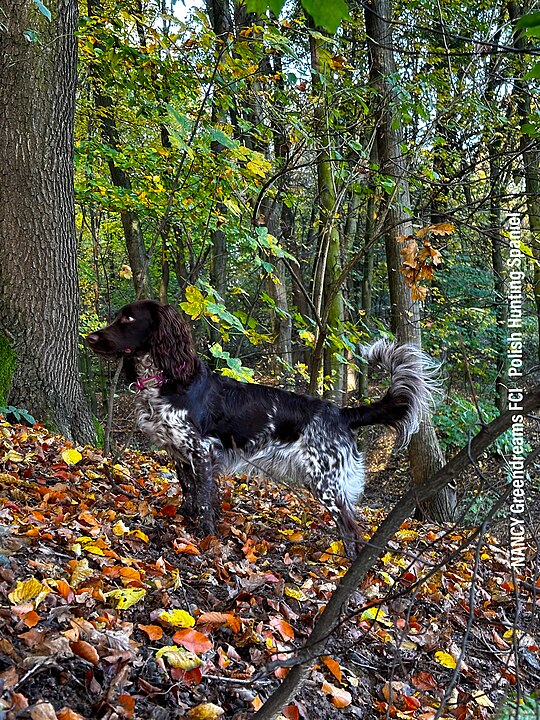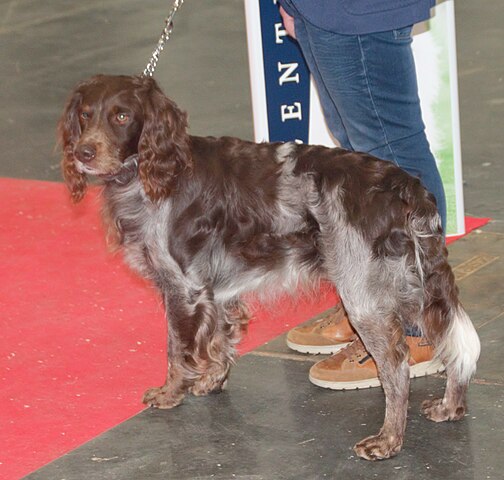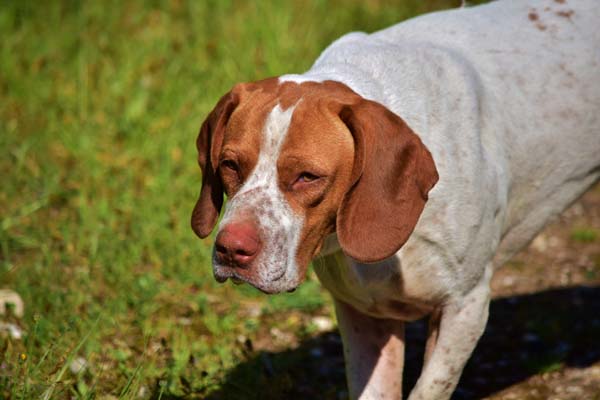The Welsh Springer Spaniel is a breed apart from his more-often recognized English cousin. Welsh Springers can be distinguished from English Springers by their red and white coloration and their shorter height. The breed is also less outgoing (though still friendly) and have more of an independent nature. They are usually happy and outgoing, possessing a sense of humor. This active hunting dog was bred for stamina and strength, and will not do well living in cramped quarters with no exercise. Besides being very active, the breed has a strong nose and will use it to follow every interesting scent that they can find!
The Welsh Springers’ strong desire to hunt means that he needs to have a securely fenced yard, lest he try to follow his nose right out of the backyard. If he sees a bird or a squirrel, he will try to chase it (although if he catches anything, his soft mouth means he might not crush it). Because he’s such an agile fellow, a short fence or a rickety fence might not keep him contained. A secure kennel run is ok for short time periods, but the Welshie isn’t a kennel dog. The breed thrives on human contact and should live inside the house. The fenced yard is great for exercise, but shouldn’t be the dog’s only living space. When living mostly indoors, the Welshie makes a great watch dog, hunting dog and companion.
This loyal breed loves his people more than anything. Although he is reserved with strangers, he is loyal and completely devoted to his family. He is usually a constant shadow, following his owner from room to room and sitting on a lap whenever possible. While this trait can be enduring, it can also be frustrating, especially if his co-dependency develops into separation anxiety. It is highly recommended that this issue be dealt with very early on, such as crate training him and leaving him for short periods of time while he is still a puppy. The sensitive nature of the breed is partly to blame for his propensity toward separation anxiety and it also contributes to occasional submissive urination issues. For a breed like the Welsh Springer Spaniel, we suggest the Petmate Vari Kennel for its ideal size and durability – https://amzn.to/3B3CUE6
Welsh Springers are quite intelligent and take very well to training! Exceptionally willing to please, most Welshies enjoy the attention that comes from training. Some members of the breed learn quickly but aren’t always reliable with doing the command every time it is asked of them. This “optional command” mindset results from poorly enforced training. Because the breed is also opportunistic, many end up training their owners instead! Obedience should be taught in a firm, yet fair manner. It doesn’t need to be harsh but it does need to enforce the rules. 
Welsh Springers must be given work to do so that they do not become bored. Unfulfilled Springers are known to become very noisy and destructive if they have nothing else to do. Other less desirable traits of the breed include digging, difficulty with housebreaking and a propensity to shed quite heavily – resulting in tumbleweeds of hair rolling throughout your house! Speaking of messiness, the breed also loves to get dirty which means that all the mud that sticks to his coat (sometimes while digging) will end up all over your carpet and furniture. This usually isn’t the best breed for clean freaks, garden-lovers or those who aren’t able to give the dog plenty to do.
Welshies often make great pets for families with children although the kids must be taught to play nicely with the dog. Because of their high activity level, however, kids and Welshies can feed off each others’ energy resulting in an almost chaotic household. Remember, Springers do tend to “spring” in more ways than one… this breed can be bouncy and may knock down very small children on accident.
When it comes to exercise, besides having access to a fenced yard, Welsh Springers benefit from having 45-60 minutes of focused exercise every day. They thrive on this active time, and will want to go out irregardless of rain or other increment weather. Walks, jogs and ball-playing are some examples of activities that can be done. It should be noted that these are flushing spaniels, which means they have a propensity of weaving back and forth during walks just as they would do in the field. This is an innate ability that many Welshies naturally do, and although they can be taught to heel normally – they enjoy having this time to “quarter the game”.
Despite his quirks, the Welsh Springer overall is a good dog for many novice dog owners, provided they are able to give him the exercise and attention that he needs. His weatherproof (and waterproof) coat makes him able to thrive in any temperature, and he is adaptable to live in many types of households. Some people are even able to keep this breed in an apartment although they do need to provide a lot of extra exercise in the process. Welshies get along well with other dogs as well as other pets, although birds might trigger the hunting instinct in them.
Affiliate Disclaimer
As an Amazon Associate, I earn from qualifying purchases. This means that if you click on an affiliate link on this site and make a purchase, I may earn a small commission at no additional cost to you. Rest assured that I only link to products I have used, or use on a regular basis, and trust enough to recommend them to you!



